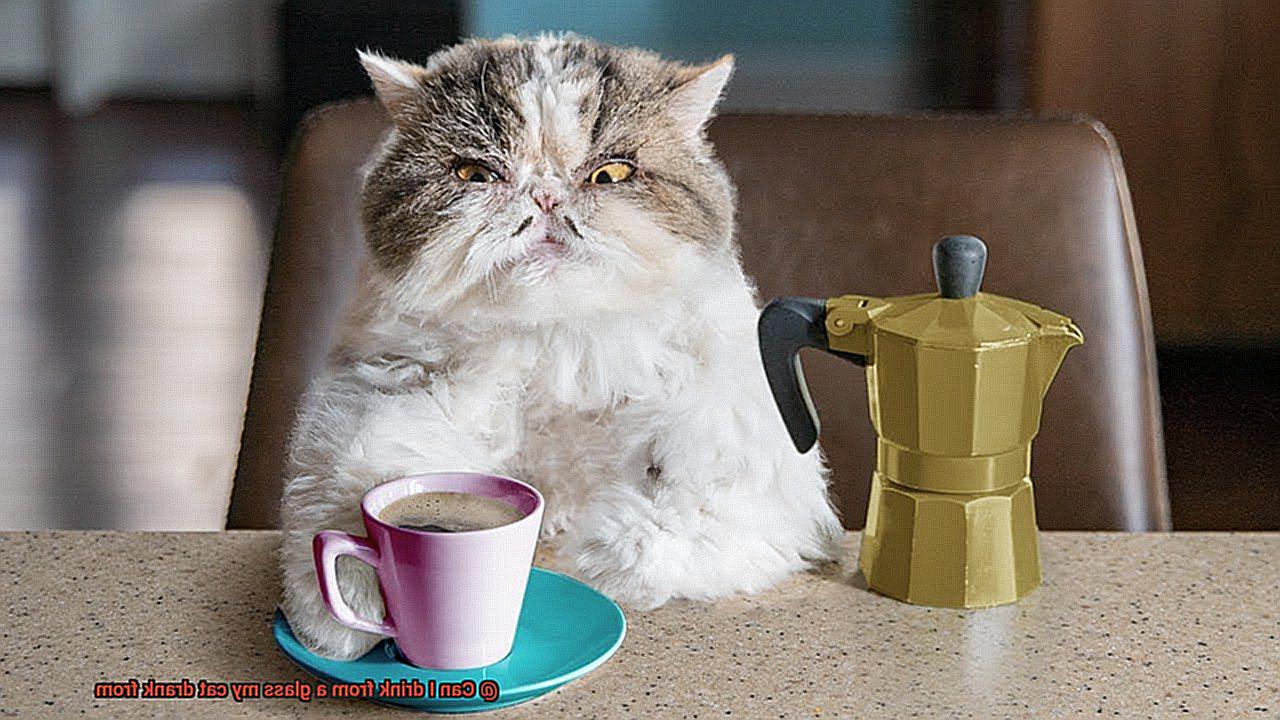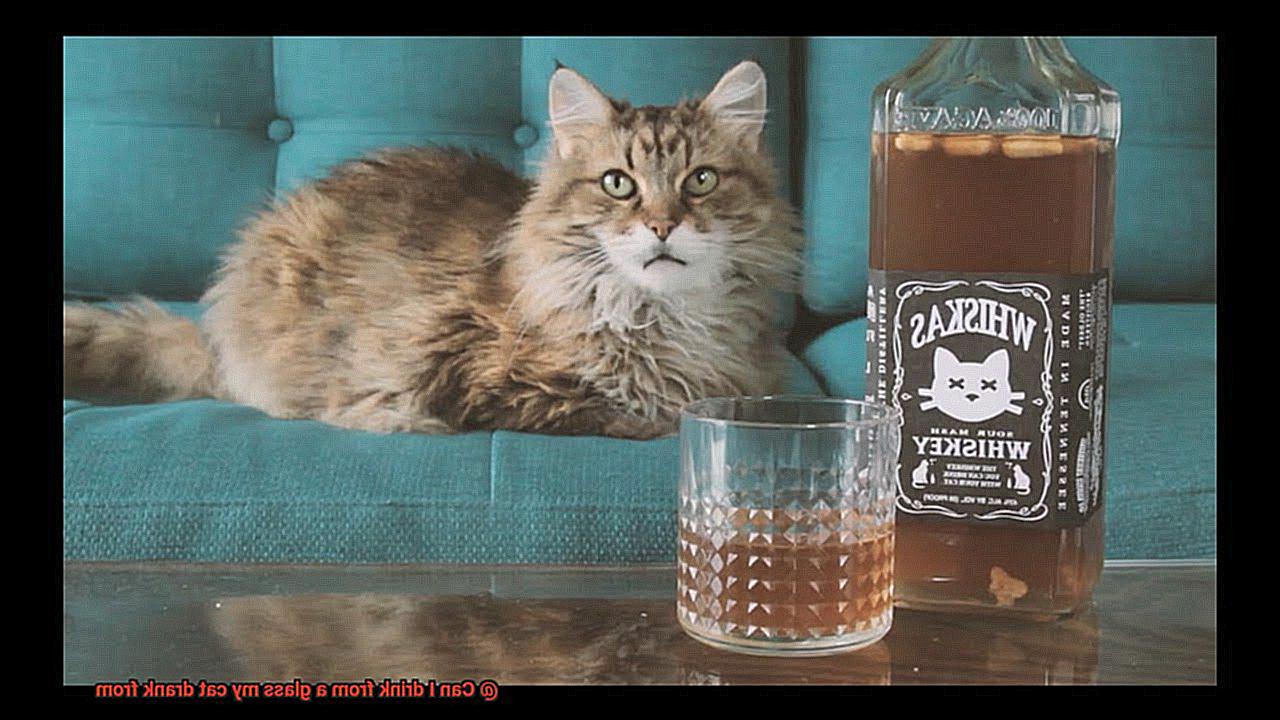Cats are fascinating creatures that have captured our hearts with their playful antics and mysterious ways. As cat lovers, we often find ourselves wondering about the little things, like whether or not it’s safe to drink from a glass that our feline friends have already taken a sip from. It may seem like a trivial matter, but it’s one that has puzzled us for ages.
In this blog post, we’ll delve into the world of cat saliva and explore the science behind their mouths. We’ll uncover the myths and legends surrounding this topic and discuss the risks and benefits of sharing water glasses with our furry companions. Whether you’re a devoted cat-owner or simply curious about these fascinating creatures, this post is for you.
So grab a cup of tea (or perhaps water?), sit back, and join us as we explore the intriguing question – can I drink from a glass my cat drank from?
What Kind of Bacteria Do Cats Carry in Their Mouths?
This habit includes licking not only their fur but also other cats. However, what many people may not realize is that this means their mouths can be home to a variety of harmful bacteria that can be dangerous if ingested by humans. So, what kind of bacteria do cats carry in their mouths?

One type of bacterium is Pasteurella multocida, commonly found in the mouths of cats and capable of causing cellulitis and abscesses in humans. Another harmful bacterium is Bartonella henselae, which causes cat-scratch disease. This bacterium is transmitted through scratches or bites from infected cats and can cause symptoms such as fever, swollen lymph nodes, and fatigue.
Cats can also carry other harmful microorganisms like Salmonella and E. coli in their mouths. These bacteria can be transmitted to humans through saliva or contact with contaminated surfaces. It’s essential to note that not all cats carry these harmful bacteria, and the risk of infection varies depending on the individual cat’s health and hygiene habits. However, it’s always better to err on the side of caution when it comes to sharing food or drink with your feline friend.

To prevent infection, it’s best to avoid sharing glasses or utensils with your cat whenever possible. If you choose to do so, it’s crucial to wash the glass thoroughly with hot water and soap before using it again. Additionally, if your cat has recently eaten something particularly strong-smelling or pungent, their saliva may carry some of that odor, making drinking from the same glass less than pleasant for humans.

Can I Drink From the Same Glass as My Cat?
Before you take that sip, there are several factors you need to consider.
Cats can carry harmful bacteria and viruses in their mouths that can be dangerous to humans. If your cat is sick or has an infection, sharing a glass with them can put you at risk of contracting these illnesses. So, it’s best to avoid sharing glasses with your cat if they are unwell.
Furthermore, cats have different dietary needs and habits than humans. They may consume raw meat or hunt prey, which can introduce bacteria into their mouths that humans may not be accustomed to. This can increase the risk of illness if you share a glass with your cat.
However, if your cat is healthy and has no known infections or illnesses, the risk of contracting anything from sharing a glass is relatively low. That said, it’s still important to maintain good hygiene by washing your hands before and after handling your cat or their belongings, including their drinking glass.
Moreover, it’s essential to consider the cleanliness of the glass itself. Cats may shed hair or leave saliva on the rim of the glass, which can be unsanitary for human consumption. It’s crucial to wash the glass thoroughly with hot water and soap before using it yourself.
Potential Risks of Drinking From a Shared Glass with Your Cat
As much as we adore our furry companions, drinking from a shared glass with them may not be the best idea. While it may seem like a harmless act, there are potential risks involved that could affect your health. Let’s dive deeper into the potential dangers of sipping from a glass that your cat has used.
One of the most significant risks is the transmission of zoonotic diseases. These are infections that can be transmitted from animals to humans, and cats can carry a variety of them. Toxoplasmosis, salmonellosis, and campylobacteriosis are just a few examples of these diseases that can be spread through saliva, urine, feces, or other bodily fluids. If you drink from a glass that your cat has used, you risk coming into contact with these pathogens and becoming infected.
Another potential risk is the transmission of bacteria. Cats are notorious for their grooming behavior and can harbor bacteria in their saliva and on their fur. When they drink from a glass, they can leave behind traces of saliva and bacteria that can contaminate the liquid. If you then drink from the same glass, you may ingest harmful microorganisms that could make you sick.
In addition to zoonotic diseases and bacterial infections, sharing a glass with your cat can also lead to an allergic reaction. Some people are allergic to cats and may experience symptoms such as sneezing, itching, or watery eyes when in contact with their saliva or fur. Drinking from a glass that your cat has used can exacerbate these symptoms and cause discomfort.
To avoid these potential risks, it’s best to provide your cat with their own water source and avoid drinking from the same glass as them. By taking these precautions, you can help ensure both you and your feline companion stay healthy and happy. Remember, it’s not worth risking your health for a cute moment with your cat.
How to Avoid Sharing Glasses with Your Cat
However, sharing glasses with your cat can pose a risk to your health. But worry not, as there are easy ways to avoid sharing glasses with your cat and keep both of you healthy.
Use Separate Glasses

The easiest solution to avoid sharing glasses with your cat is to use separate glasses. This eliminates the risk of cross-contamination and keeps you both safe.
Wash Glasses Thoroughly
If you do end up sharing a glass with your cat, make sure to wash it thoroughly with hot water and soap before using it again. You can also soak it in a solution of water and bleach or vinegar for at least 10 minutes to kill any bacteria that may be present.
Use Straws
Using a straw can help reduce the risk of bacterial transfer by preventing direct contact between your mouth and the glass. This is an excellent option if you’re sharing a drink with your feline friend.
Train Your Cat
If your cat is trained not to drink from your glass, it eliminates the need for separate glasses or straws altogether. You can do this by providing them with their own water bowl or offering them drinks from a separate container.
Keep Your Cat’s Water Bowl Clean
Regularly cleaning and refilling your cat’s water bowl will prevent them from seeking out alternative sources of hydration, such as your glass.
Cleaning the Glass After Sharing with Your Cat
While it may seem harmless, sharing a glass with your cat can put your health at risk. You see, cats carry bacteria and viruses in their saliva, which can easily transfer to the glass they drink from. This can lead to illnesses such as colds and flu, as well as more serious conditions like toxoplasmosis.
To avoid any potential health risks, it’s important to prioritize hygiene and cleanliness when sharing a glass with your cat. The first step is to clean the glass thoroughly after they’ve had a sip. Start by washing the glass with hot water and soap to remove any traces of saliva that may contain harmful bacteria or viruses. Then, rinse the glass thoroughly to ensure there are no remaining traces of saliva.
For an extra layer of protection, consider using a disinfectant or bleach solution to sanitize the glass. This is particularly important if your cat has any health issues or is prone to carrying bacteria. Simply mix the solution according to the instructions on the packaging and let the glass soak for a few minutes before rinsing it thoroughly.
But it’s not just the glass that needs cleaning. Regularly cleaning your cat’s water bowl or drinking fountain will prevent the buildup of bacteria and other contaminants that could potentially harm both you and your cat.
When Is It Safe to Share a Glass With Your Cat?
While the thought of sipping from the same cup as your feline friend may seem innocent and adorable, it’s essential to understand the potential risks involved. As an expert in the field, I am here to provide you with all the information you need to decide when it is safe to share a glass with your cat.
It is important to note that cats can carry harmful bacteria and viruses in their saliva that can easily transmit to humans through sharing glasses or utensils. These contaminants can cause various illnesses ranging from mild colds and flu to severe infections like salmonella. However, by prioritizing hygiene and cleanliness, you can reduce the potential health risks and enjoy a drink with your furry friend.
The safety of sharing a glass with your cat depends on several factors such as their overall health, age, and whether they have any infectious diseases. If your cat is healthy and up-to-date on their vaccinations, the risk of contracting bacterial infections is relatively low. Furthermore, if you take necessary precautions by ensuring that the glass is clean and sanitized before and after use, the risk of infection is further reduced.
It is crucial to avoid sharing glasses with cats who have any open wounds or sores in their mouth or are currently undergoing treatment for an infection. In such cases, it’s best to prioritize your cat’s health and avoid any potential health risks by not sharing glasses or other utensils with them. Always consult with your veterinarian if you have any concerns about your cat’s health or safety when sharing glasses or other utensils.
8UXif4cdcO4″ >
Conclusion
In conclusion, while it may seem harmless to take a sip from a glass that your cat has already drunk from, there are potential health risks involved. Cats carry harmful bacteria and viruses in their saliva that can be dangerous to humans if ingested. However, by prioritizing hygiene and cleanliness, you can reduce the risk of infection and enjoy a drink with your furry friend.
To avoid any potential health hazards, it’s essential to avoid sharing glasses with cats who have any open wounds or sores in their mouth or are currently undergoing treatment for an infection. It’s best to use separate glasses or straws when sharing drinks with your cat to prevent cross-contamination.
Regularly cleaning your cat’s water bowl or drinking fountain will also prevent the buildup of bacteria and other contaminants that could potentially harm both you and your cat.
Overall, the safety of sharing a glass with your cat depends on several factors such as their overall health, age, and whether they have any infectious diseases. But don’t worry. If you take necessary precautions by ensuring that the glass is clean and sanitized before and after use, the risk of infection is further reduced.
We all love our furry companions, but it’s not worth risking our health for a cute moment with them.







